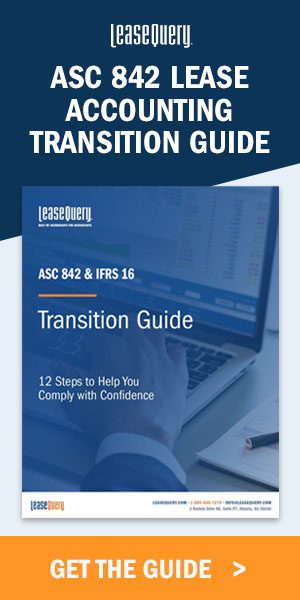This article, "Lease Modifications: A Refresher," originally appeared on KeiterCPA.com.
Summary provided by MaterialAccounting.com: This article provides an overview of accounting for lease modifications under the new lease accounting standard, ASC 842.
December 30, 2020
By
Colin M. Hannifin, CPA, Business Assurance & Advisory Services Senior Manager
Appropriate Accounting for Lease Modifications as a Result of COVID-19
This article is Part 2 of two articles to assist business owners and managers with debt and lease modification guidance.
As 2020 draws to a close, many entities are looking back at the year while also looking forward to the process of closing their books and moving into 2021. 2020 has been one of the most disruptive years in recent memory; virtually all entities have felt the impact of the ongoing COVID-19 pandemic –from both the lockdowns to contain the spread of the virus and the relief efforts to offset the impact of the lockdown. Many entities received relief from their creditors and lessors in the form of deferred payments, waived fees, and adjusted amortization schedules. As the recipient entities close their books, they will want to ensure that the accounting applied is appropriate.
Lease Modifications: ASC 840 or ASC 842?
The appropriate accounting for a lease modification determines whether an entity is still reporting under ASC 840 (existing lease guidance) or has applied ASC 842 (new lease guidance).
While a brief overview of lease modification guidance under the two lease standards follows below, in April 2020, the FASB issued a Staff Q&A which acknowledged that while there is existing lease modification guidance, it did not contemplate a scenario in which there would be widespread concessions, as has been seen throughout the pandemic. Typically, the concessions that have been granted during the pandemic would have to be evaluated and treated as lease modifications; however, because of the volume of concessions, assessing each for proper treatment is likely to be burdensome to already-stretched accounting departments.
Therefore, the FASB, in the same documents, notes that it is acceptable for entities to elect to account for lease concessions related to the COVID-19 pandemic as though the enforceable rights and obligations for the concessions existed prior to any modification (even if not explicitly noted in the lease agreement). If such an election is made, an entity will not have to analyze each contract and can elect to apply or not apply the appropriate lease modification guidance. This election is only available for concessions related to the pandemic that do not substantially alter the rights of the lessor or the obligation of the lessee.
The most common concession may be the deferral of payments under a lease. The FASB presents two potential treatment options:
- Account for the concession as though no changes were made. Under this option, a lessee’s rent expense and accounts payable would continue to accrue during the deferral period.
- Account for the deferred payments as variable lease payments.
Accounting for Lease Modifications under ASC 840 (Existing Lease Guidance)
Under ASC 840, an entity should determine whether the lease, under the revised terms, would have been classified as a capital or operating lease. If the classification is different than the original lease, the revised lease is treated as a new agreement over its remaining term. If the original lease is a capital lease but the revised terms would have resulted in operating treatment, the transaction should be accounted for as a sale-leaseback transaction.
Accounting for Lease Modifications under ASC 842 (New Lease Guidance)
Under ASC 842, an entity will account for a modification as a separate contract if both of the following conditions are present:
- The modification grants the lessee an additional right of use not included in the original lease; and
- The lease payments increase commensurate with the standalone price for the additional right of use, adjusted for the facts and circumstances of the particular contract.
If either of those conditions are not present, an entity should determine whether the modification would result in a different classification of the lease and remeasures the lease liability and adjusts the right of use asset.
Conclusion
The impact of the COVID-19 pandemic is still being felt and will continue for years to come. Entities should ensure that they are comfortable with the lease modification guidance referenced above; as 2020 activity winds down and financial statements are prepared and reviewed, these will be areas of emphasis for users of the financial statements.
Question on this topic? Contact your Opportunity Advisor | Email | Call: 804.747.0000. We can help.
DEBT AND LEASE MODIFICATION GUIDANCE – PART 1
Share this Insight:
About the Author
The information contained within this article is provided for informational purposes only and is current as of the date published. Online readers are advised not to act upon this information without seeking the service of a professional accountant, as this article is not a substitute for obtaining accounting, tax, or financial advice from a professional accountant.




